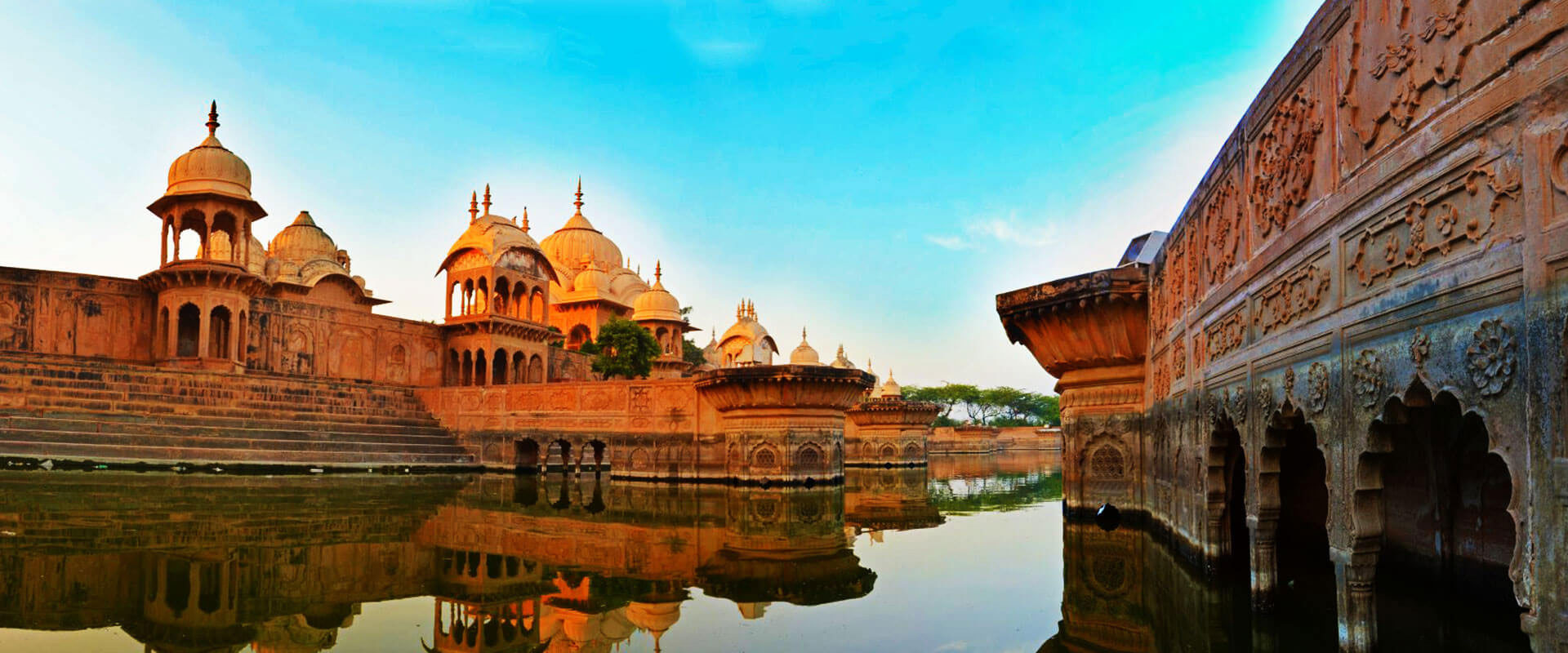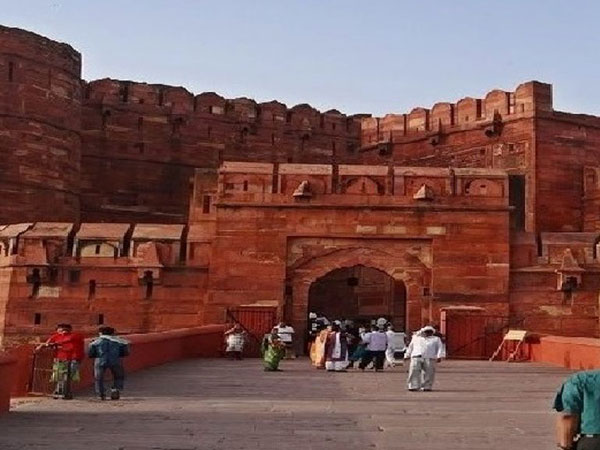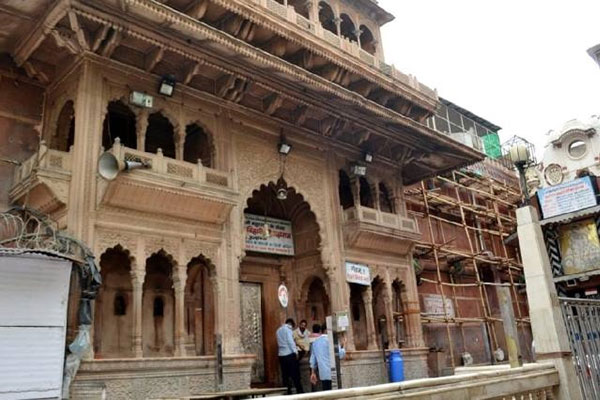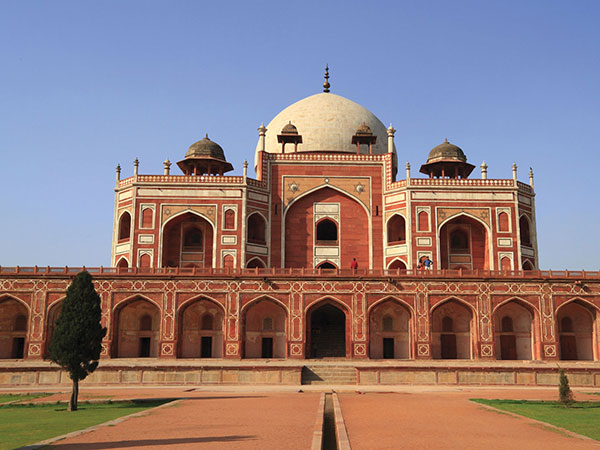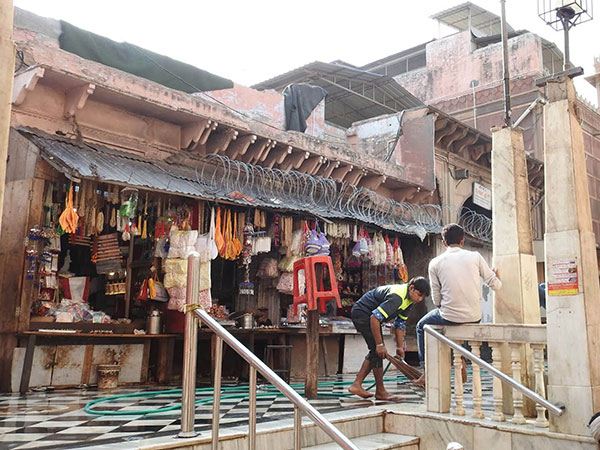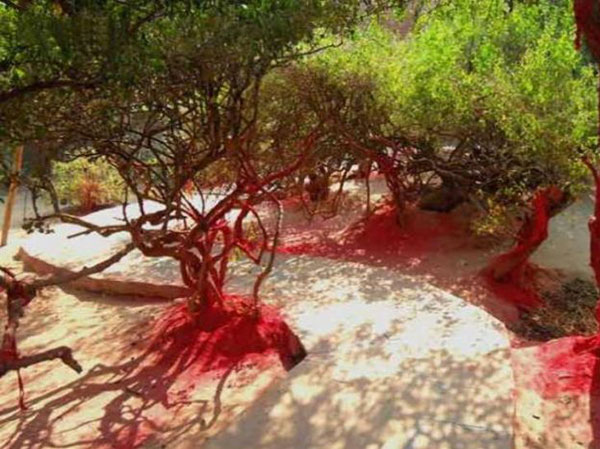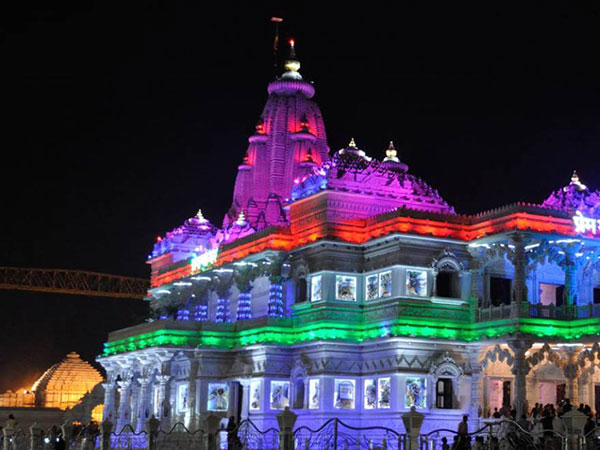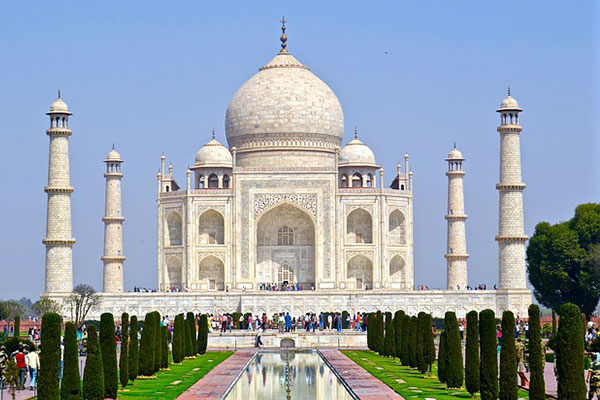Delhi Agra Mathura Vrindavan 3 Nights 4 days
/ per person
(0 Reviews)
The Taj Mahal (meaning Crown of the Palace) is an ivory-white marble mausoleum on the south bank of the Yamuna river in the Indian city of Agra. It was commissioned in 1632 by the Mughal emperor, Shah Jahan (reigned from 1628 to 1658), to house the tomb of his favourite wife, Mumtaz Mahal. The tomb is thecenterpiece of a 17-hectare (42-acre) complex, which includes a mosque and a guest house, and is set in formal gardens bounded on three sides by a crenellated wall.
Shri Bankey Bihari Mandir, the Bankey Bihari temple of Vrindavan is one of the holiest temples of Lord Krishna in India. Constructed in 1864, the temple houses the idol of Lord Krishna in the form of a child i.e. Nand Gopal.
Tour Itinerary
- Delhi
- Agra Fort
- Taj Mahal
- Mathura
- Vrindavan
- Drop Airport Delhi
-
Destination
-
Departure
Delhi / Delhi -
Departure Time
Approximately 10:00 AM or 11:00 AM -
Return Time
Approximately 5:00 PM -
Dress Code
Casual and Comfortable -
Included
Airport TransferBreakfastDinner -
Not Included
5 Star AccommodationGallery TicketLunchPersonal Guide
Tour Plan
1
DAY 1: Delhi to Agra Local Market Visit
Pick up Delhi Railway Station to Move hotel after Fresh see run way side seen to Agra Local visit.
The Taj Mahal (meaning Crown of the Palace) is an ivory-white marble mausoleum on the south bank of the Yamuna river in the Indian city of Agra. It was commissioned in 1632 by the Mughal emperor, Shah Jahan (reigned from 1628 to 1658), to house the tomb of his favourite wife, Mumtaz Mahal. The tomb is thecenterpiece of a 17-hectare (42-acre)[5] complex, which includes a mosque and a guest house, and is set in formal gardens bounded on three sides by a crenellated wall.
The Taj Mahal (meaning Crown of the Palace) is an ivory-white marble mausoleum on the south bank of the Yamuna river in the Indian city of Agra. It was commissioned in 1632 by the Mughal emperor, Shah Jahan (reigned from 1628 to 1658), to house the tomb of his favourite wife, Mumtaz Mahal. The tomb is thecenterpiece of a 17-hectare (42-acre)[5] complex, which includes a mosque and a guest house, and is set in formal gardens bounded on three sides by a crenellated wall.
- Meal: Dinner
- Night Agra
2
DAY 2: Agra Local Side SeenVisit
Morning After Breakfast Move Agra Local Sightseeing Visit
Agra Fort is a historical fort in the city of Agra in India. It was the main residence of the emperors of the Mughal Dynasty till 1638, when the capital was shifted from Agra to Delhi. The Agra fort is a UNESCO World Heritage site. It is about 2.5 km northwest of its more famous sister monument, the Taj Mahal. The fort can be moreaccurately described as a walled city.
The Museum was established in 1982 in the ground floor in western Naubat Khana, also known as Jal Mahal, with in the Taj Mahal complex. It is a double storied building having a quadrangle projection outside and is built on a raised platform. The museum comprises of three galleries in addition to the main hall and has on display various exhibits relating mostly to the construction of the Taj Mahal and to the period of its builders. Totally 121 antiquities are on display, which are broadly categorized as Mughal miniature paintings, manuscripts, government decrees, specimen of calligraphy, arms, utensils, plans and drawings of Taj Complex, paintings, specimen inlay work, marble pillars, etc
Tomb of I'timād-ud-Daulah I'timād-ud-Daulah kā Maqbara) is a Mughal mausoleum in the city of Agra in the Indian state of Uttar Pradesh. Often described as a "jewel box", sometimes called the "Baby Tāj", the tomb of I'timād-ud-Daulah is often regarded as a draft of the Tāj Mahal. Along with the main building, the structure consists of numerous outbuildings and gardens. The tomb, built between 1622 and 1628 represents a transition between the first phase of monumental Mughal architecture – primarily built from red sandstone with marble decorations, as in Humayun's Tomb in Delhi and Akbar's tomb in Sikandra – to its second phase, based on white marble and pietra dura inlay, most elegantly realized in the Tāj Mahal
Agra Fort is a historical fort in the city of Agra in India. It was the main residence of the emperors of the Mughal Dynasty till 1638, when the capital was shifted from Agra to Delhi. The Agra fort is a UNESCO World Heritage site. It is about 2.5 km northwest of its more famous sister monument, the Taj Mahal. The fort can be moreaccurately described as a walled city.
The Museum was established in 1982 in the ground floor in western Naubat Khana, also known as Jal Mahal, with in the Taj Mahal complex. It is a double storied building having a quadrangle projection outside and is built on a raised platform. The museum comprises of three galleries in addition to the main hall and has on display various exhibits relating mostly to the construction of the Taj Mahal and to the period of its builders. Totally 121 antiquities are on display, which are broadly categorized as Mughal miniature paintings, manuscripts, government decrees, specimen of calligraphy, arms, utensils, plans and drawings of Taj Complex, paintings, specimen inlay work, marble pillars, etc
Tomb of I'timād-ud-Daulah I'timād-ud-Daulah kā Maqbara) is a Mughal mausoleum in the city of Agra in the Indian state of Uttar Pradesh. Often described as a "jewel box", sometimes called the "Baby Tāj", the tomb of I'timād-ud-Daulah is often regarded as a draft of the Tāj Mahal. Along with the main building, the structure consists of numerous outbuildings and gardens. The tomb, built between 1622 and 1628 represents a transition between the first phase of monumental Mughal architecture – primarily built from red sandstone with marble decorations, as in Humayun's Tomb in Delhi and Akbar's tomb in Sikandra – to its second phase, based on white marble and pietra dura inlay, most elegantly realized in the Tāj Mahal
- Meal:Breakfast & Dinner
- Night Agra
3
DAY 3: Agra to Vrindavan & Mathura Visit
Early Morning After Breakfast check out Hotel Move See Run way Side Seen Vrindavan Mathura Visit
Shri Bankey Bihari Mandir, the Bankey Bihari temple of Vrindavan is one of the holiest temples of Lord Krishna in India. Constructed in 1864, the temple houses the idol of Lord Krishna in the form of a child i.e. Nand Gopal.
Krishna Janma Bhoomi Mandir” Krishna Janmasthan Temple Complex is a group of Hindu temples in Mallapura, Mathura, Uttar Pradesh, India. These temples are built around the place where major Hindu deity Krishna is said to have been born. The place holds religious significance since the 6th century BC. The temples were destroyed multiple times throughout history, latest by Mughal emperor Aurangzeb in 1670 who erected Eidgah there. In 20th century, the new temple complex was built with financial help from industrialists containing the Keshavdeva temple, the Garbha Griha temple at the birth place and the Bhagavata Bhavan.
Govind devji Temple One of North India’s most impressive temple buildings, the historic Govind dev Temple, masterfully constructed out of red sandstone, is a definite must-visit site in holy Vrindavan. Considered one of the Prem mandir Imbued with elegance and grandeur, the Prem Mandir is a massive temple that was shaped by Jagadguru Shri Kripaluji Maharaj in the year 2001. Known as "Temple of God's love", this grand religious place is dedicated to Radha Krishna as well as Sita Ram. Located in Vrindavan, the holy city in the district of Mathura in Uttar Pradesh, the temple is enveloped with piousness and serenity. This newly constructed temple is the most beautiful in the entire Brij area and is crowded with devotees during the time of the Aarti.
Shri Bankey Bihari Mandir, the Bankey Bihari temple of Vrindavan is one of the holiest temples of Lord Krishna in India. Constructed in 1864, the temple houses the idol of Lord Krishna in the form of a child i.e. Nand Gopal.
Krishna Janma Bhoomi Mandir” Krishna Janmasthan Temple Complex is a group of Hindu temples in Mallapura, Mathura, Uttar Pradesh, India. These temples are built around the place where major Hindu deity Krishna is said to have been born. The place holds religious significance since the 6th century BC. The temples were destroyed multiple times throughout history, latest by Mughal emperor Aurangzeb in 1670 who erected Eidgah there. In 20th century, the new temple complex was built with financial help from industrialists containing the Keshavdeva temple, the Garbha Griha temple at the birth place and the Bhagavata Bhavan.
Govind devji Temple One of North India’s most impressive temple buildings, the historic Govind dev Temple, masterfully constructed out of red sandstone, is a definite must-visit site in holy Vrindavan. Considered one of the Prem mandir Imbued with elegance and grandeur, the Prem Mandir is a massive temple that was shaped by Jagadguru Shri Kripaluji Maharaj in the year 2001. Known as "Temple of God's love", this grand religious place is dedicated to Radha Krishna as well as Sita Ram. Located in Vrindavan, the holy city in the district of Mathura in Uttar Pradesh, the temple is enveloped with piousness and serenity. This newly constructed temple is the most beautiful in the entire Brij area and is crowded with devotees during the time of the Aarti.
- Meal: Breakfast & Dinner
- Night Varindavan
4
DAY 4: Vrindavan to Drop Delhi
Morning After Breakfast Check out Hotel Move See run Way Sightseeing Drop Delhi Railway station or Airport


